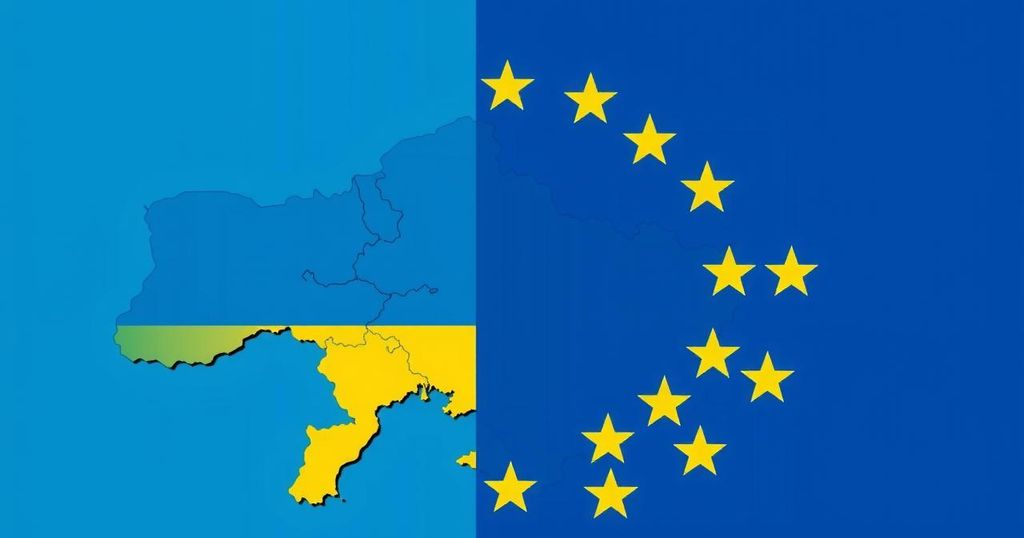The EU has committed 18.1 billion euros ($19 billion) to Ukraine, part of a $50 billion G7 loan, funded by frozen Russian assets. This support comes during a time of heightened conflict, as the EU and G7 nations work to bolster Ukraine’s defenses against Russian attacks.
On November 28, 2024, the European Union announced its commitment to provide 18.1 billion euros (approximately $19 billion) to Ukraine, aligned with a broader G7 loan initiative funded by profits from frozen Russian assets. This decision occurs amid a significant nationwide missile and drone assault by Russia, leaving over a million Ukrainians without power during harsh winter conditions. The G7, comprised of major advanced economies, solidified an agreement last month to extend a total of $50 billion in financial assistance to aid Ukraine in its ongoing conflict with Russia, with the United States pledging $20 billion along with contributions from allied nations including the United Kingdom, Canada, and Japan.
This financial support arrives at a pivotal moment for Ukraine, especially in light of emerging uncertainties regarding continued US backing with the potential return of Donald Trump to power. Initially, the EU had expressed a willingness to provide up to $38 billion before coordinating with its G7 partners for definitive contributions. Valdis Dombrovskis, a senior EU official, confirmed the agreement on social media, emphasizing the memorandum’s intent to address Ukraine’s immediate needs.
Ukrainian Prime Minister Denys Shmygal lauded the EU’s contribution, describing it as a significant step towards ensuring accountability for Russia’s aggressive actions. He indicated that this aid transcends mere financial assistance, marking a precedent that underscores the necessity for Russia to be held responsible for its offenses. The EU has so far immobilized approximately $235 billion of Russian central bank funds since the onset of the invasion. This latest fund infusion supplements the roughly 120 billion euros already provided by the EU and its member states since the conflict began.
The financial support from the European Union to Ukraine is part of a larger coordinated effort by the G7 nations to assist Ukraine amid its aggressive conflict with Russia. Since Russia’s invasion of Ukraine in 2022, the EU has actively engaged in measures to support the Ukrainian government, ranging from financial aid to sanctions against Russian assets. The freezing of Russian funds has played a critical role in securing financial assistance, allowing the EU and its partners to provide the much-needed resources to stabilize Ukraine’s economy and bolster its defense efforts. The agreement reached within the G7 highlights the importance of international solidarity in addressing the crisis in Ukraine, particularly as uncertainties loom regarding the future of legislative support from key allies.
In summary, the EU’s commitment to provide 18.1 billion euros to Ukraine is a vital addition to a broader G7 effort to support the nation amid ongoing Russian aggression. This financial aid not only aims to address immediate needs but also sets a significant precedent for holding Russia accountable. With the geopolitical landscape shifting, particularly in relation to US support, the EU’s actions represent a crucial step in reinforcing Ukraine’s resilience and determination to withstand external threats.
Original Source: www.seychellesnewsagency.com






